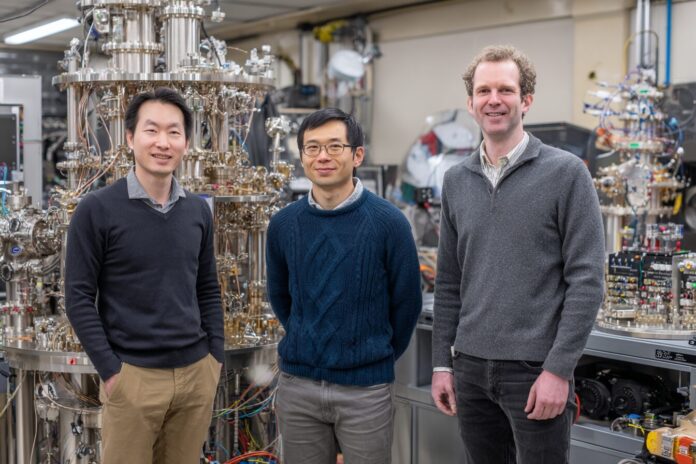The Next Leap in Precision: NIST’s Record-Setting Aluminum Ion Clock
Timekeeping has reached an unprecedented milestone, pushing the boundaries of what is technically conceivable. At the National Institute of Standards and Technology (NIST), scientists have achieved a breakthrough by developing a quantum logic atomic clock that now holds the title of the most accurate clock ever built. This achievement is far more than an incremental improvement—it is a leap that redefines precision measurements. Because this clock can measure time down to the 19th decimal place, it is transforming our understanding and application of precise timekeeping.
Most importantly, this advancement not only elevates scientific measurement but also paves the way for innovations in technology, navigation, and even the redefinition of time standards. Therefore, the implications of this breakthrough resonate far beyond the laboratory. Besides that, the accomplishment lays the foundation for future explorations that could unveil new aspects of fundamental physics.
The Science Behind the Breakthrough
So, what drives this major leap in timekeeping accuracy? The answer lies in the innovative use of a single aluminum ion, with a magnesium ion acting as its quantum companion in a process known as quantum logic spectroscopy. Initially, aluminum ions present challenges for direct interaction, but by pairing them with magnesium ions, scientists can accurately measure the energy states of the aluminum ion. Because the magnesium ion effectively cools and aids in reading the aluminum ion, the technique minimizes noise and systematic errors, achieving an unprecedented level of precision.
This state-of-the-art method is supported by ultra-stable lasers, advanced electromagnetic traps, and meticulously maintained vacuum chambers. As described in the NIST bulletin, each element of the experimental setup has undergone decades of refinement. Therefore, the tremendous progress made over the past twenty years exemplifies the power of continuous innovation and dedication.
Unrivaled Numbers: The Magnitude of Precision
The new aluminum ion clock is not only a scientific marvel but also a testament to precision engineering. It boasts a performance feature that allows it to measure time to the 19th decimal place. Because of this extraordinary capability, if the clock were running since the dawn of the universe—approximately 13.8 billion years—it would deviate by less than one second today.
Most importantly, such precision transforms timekeeping into a powerful tool for testing fundamental theories in physics. For instance, it offers a means to examine tiny shifts in universal constants and verify aspects of Einstein’s theory of relativity at scales never reached before. In addition, this breakthrough opens new doors for experiments that could potentially lead to revolutionary discoveries about the cosmos.
Real-World Impact: Benefits Beyond the Laboratory
Ultra-precise clocks such as this are not just lab curiosities. They hold significant promise for a range of practical applications. Because accurate time measurement is a critical component of technologies, its impact spans various fields.
For example, enhanced Global Positioning Systems (GPS) rely heavily on precise time signals. As noted in recent industry analyses, an improvement in clock stability and accuracy directly influences the performance of navigation systems in everything from smartphones to autonomous vehicles. Most importantly, better clocks mean lower errors and improved reliability in time-sensitive applications.
In addition, international standards bodies are now exploring the possibility of redefining the second based on these advanced optical clocks. The new aluminum ion clock stands as a potential cornerstone in this global effort, as highlighted by sources such as NIST and detailed in Physics World. Besides that, fields like quantum computing and secure communications also benefit due to the need for synchronized time across networks.
Advancing Scientific Frontiers
Because this aluminum ion clock exhibits 41% greater accuracy and 2.6 times more stability than previously developed clocks, it not only serves present-day needs but also acts as a stepping stone towards future scientific breakthroughs. Researchers now have an invaluable tool that can detect minuscule variations in fundamental constants, thereby testing the limits of our physical theories.
This boost in precision aids scientists in exploring phenomena that were previously beyond experimental verification. Therefore, experiments that were once considered impossible might now be within reach. According to the latest NIST report, this breakthrough has ignited a wave of research that could reshape our understanding of the universe.
Looking to the Future: Implications and Possibilities
As we stand on the brink of a new era in timekeeping, the impact of these innovations goes well beyond the confines of the laboratory. Most significantly, this new standard in precision promotes a future where timekeeping could be integrated into domains that require extreme accuracy, such as deep-space communication and advanced computational systems.
Furthermore, the success of the aluminum ion clock suggests that the redefinition of the second is on the horizon. Scientists around the globe are now more optimistic about establishing new international benchmarks for time. Therefore, the record-setting NIST clock has not only pushed the boundaries of atomic physics but also catalyzed conversations about redefining core scientific metrics. As extensively detailed by industry experts, this achievement could be the precursor to even more groundbreaking innovations in timekeeping.
Learn More and Explore the Details
If you wish to explore further details on this breakthrough, a deeper examination can be found in the official NIST bulletin. Moreover, for a closer look at how the quantum logic mechanism is revolutionizing atomic clocks, insightful analyses have been published in reputable sources such as NIST News and Physics World. Most importantly, these developments underscore an invigorated journey in precision measurement with significant implications for various technologies.
Because this field is rapidly evolving, continuous advancements are expected, promising an exciting future where every fraction of a second counts. Therefore, we invite enthusiasts and professionals alike to follow these developments as they reshape our understanding of time and its measurement.



